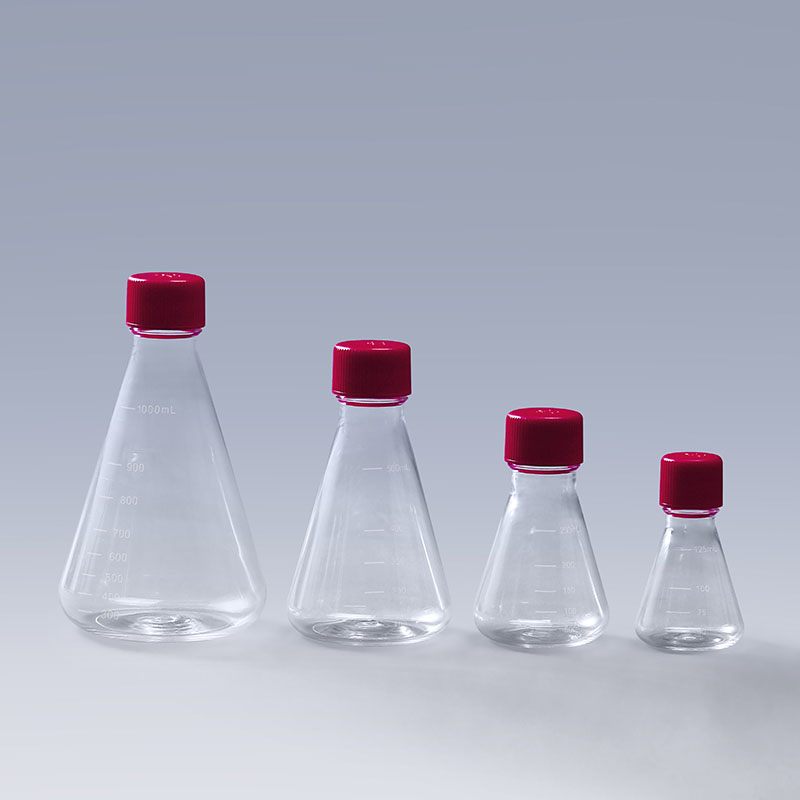During the early stages of cell culture, Cell culture shake flasks are indispensable tools. Choosing the right material is crucial for promoting cell growth and maintaining cell health. PC and PETG are two common materials that are highly regarded in the field of cell culture.
Characteristics of PC material:
Excellent Transparency: PC material provides outstanding transparency, allowing researchers to observe cell growth status and cell density clearly.
High Temperature Resistance: PC material can withstand high temperatures, making it suitable for sterilization processes and high-temperature disinfection, which are essential for aseptic operations in cell culture.
Chemical Resistance: PC material exhibits good resistance to common chemical solutions and disinfectants, making it resistant to corrosion and helping to maintain the stability of the culture environment.
Impact Resistance: PC Cell culture shake flasks have high impact resistance and are not easily broken, thus protecting the cultures under harsh experimental conditions.

Characteristics of PETG material:
Good Transparency: Although PETG has slightly lower transparency than PC, it still provides sufficient clarity to observe cell growth.
Cost-Effectiveness: Compared to PC, PETG has lower manufacturing costs, making it more suitable for laboratories with limited budgets or large-scale cell cultures.
Processability: PETG material has good processing properties, resulting in smooth flask surfaces that are less prone to scratching, facilitating cell attachment and growth.
Environmental Friendliness: PETG is a recyclable plastic, meeting environmental requirements, making it a good choice for laboratories focused on sustainability.
In conclusion, both PC and PETG are commonly used materials for Cell culture shake flasks. PC has advantages in temperature resistance, transparency, and impact resistance, while PETG stands out in terms of environmental friendliness, processability, and cost-effectiveness. The choice of material depends on specific circumstances.
The FAI climbed 5.9 percent year-on-year in the first 11 months of 2018, quickening from the 5.7-percent growth in Jan-Oct, the National Bureau of Statistics (NBS) said Friday in an online statement.
The key indicator of investment, dubbed a major growth driver, hit the bottom in August and has since started to rebound steadily.
In the face of emerging economic challenges home and abroad, China has stepped up efforts to stabilize investment, in particular rolling out measures to motivate private investors and channel funds into infrastructure.
Friday's data showed private investment, accounting for more than 60 percent of the total FAI, expanded by a brisk 8.7 percent.
NBS spokesperson Mao Shengyong said funds into weak economic links registered rapid increases as investment in environmental protection and agriculture jumped 42 percent and 12.5 percent respectively, much faster than the average.
In breakdown, investment in high-tech and equipment manufacturing remained vigorous with 16.1-percent and 11.6-percent increases respectively in the first 11 months. Infrastructure investment gained 3.7 percent, staying flat. Investment in property development rose 9.7 percent, also unchanged.
 English
English


















































